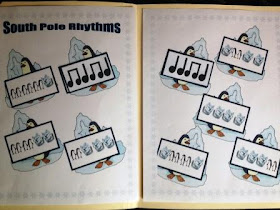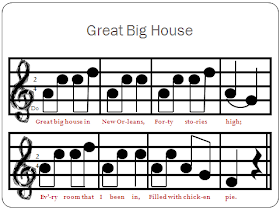For Christmas, my mom bought me this great little book: Lacey Walker, Non-Stop Talker. It's very cute! The book also addresses the whisper, shouting, singing, and of course, speaking ( well, talking) voices - great for Kinders.
The puppet, named Amanda, is a great tool to use for young singers in solo singing situations. Usually, I'll have a puppet sing a question, and a student sing an answer (using pitches So and Mi). It's a great, non-threatening way to assess your students. Many students can synthesize a correct response while singing, but sometimes these modifications help:
* If a student doesn't use a singing voice, I have the puppet ask them to repeat their answer, saying, "Can you tell me again in your singing voice?" We all need a 2nd chance sometimes.
* If a student still doesn't use their singing voice, I select a few others to try, and compliment them on their singing voices. I'll often say, "Doesn't she have a nice signing voice?" Sometimes, I'll even ask good singers to repeat their answer. Afterwards, I can call on a student who struggles to song and, after hearing peers accomplish this comfortably, they are more successful.
* Sometimes, a student struggles with coming up with a response. I like to brainstorm out loud together, before choosing soloists. For example, if we are answering the question, "What's your favorite candy?" - we'll list many favorite candies so students have a reference. If your students are bilingual, brainstorm responses in their native language. You may also need to ask the question in their language as well.
* Record your students. Let them listen to how their voices sound. Often, reluctant or shy singers will offer to participate if you use this easy incentive.








.jpg)
.png)
.png)
.png)
.png)
.jpg)


.jpg)

.png)
.jpg)
.png)
.png)
.jpg)











.jpg)
.jpg)

.png)








